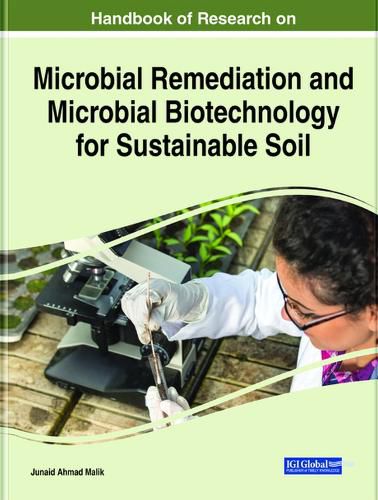Readings Newsletter
Become a Readings Member to make your shopping experience even easier.
Sign in or sign up for free!
You’re not far away from qualifying for FREE standard shipping within Australia
You’ve qualified for FREE standard shipping within Australia
The cart is loading…






This title is printed to order. This book may have been self-published. If so, we cannot guarantee the quality of the content. In the main most books will have gone through the editing process however some may not. We therefore suggest that you be aware of this before ordering this book. If in doubt check either the author or publisher’s details as we are unable to accept any returns unless they are faulty. Please contact us if you have any questions.
The introduction of contaminants, due to rapid urbanization and anthropogenic activities into the environment, causes distress to the physio-chemical systems including living organisms, which possibly is threatening the dynamics of nature as well as the soil biology by producing certain xenobiotics. Hence, there is an immediate global demand for the diminution of such contaminants and xenobiotics that can otherwise adversely affect the living organisms. Some toxic xenobiotics include synthetic organochlorides such as PAHs and some fractions of crude oil and coal. Over time, microbial remediation processes have been accelerated to produce better, more eco-friendly, and more biodegradable solutions for complete dissemination of these xenobiotic compounds. The advancements in microbiology and biotechnology led to the launch of microbial biotechnology as a separate area of research and contributed dramatically to the development of areas like agriculture, environment, biopharmaceutics, fermented foods, and more.
The Handbook of Research on Microbial Remediation and Microbial Biotechnology for Sustainable Soil provides a detailed comprehensive account for microbial treatment technologies, bioremediation strategies, biotechnology, and the important microbial species involved in remediation. The chapters focus on recent developments in microbial biotechnology in the areas of agriculture and environment and the physiology, biochemistry, and the mechanisms of remediation along with a future outlook. This book is ideal for scientists, biologists, academicians, students, and researchers in the fields of life sciences, microbiology, environmental science, environmental engineering, biotechnology, agriculture, and health sciences.
$9.00 standard shipping within Australia
FREE standard shipping within Australia for orders over $100.00
Express & International shipping calculated at checkout
This title is printed to order. This book may have been self-published. If so, we cannot guarantee the quality of the content. In the main most books will have gone through the editing process however some may not. We therefore suggest that you be aware of this before ordering this book. If in doubt check either the author or publisher’s details as we are unable to accept any returns unless they are faulty. Please contact us if you have any questions.
The introduction of contaminants, due to rapid urbanization and anthropogenic activities into the environment, causes distress to the physio-chemical systems including living organisms, which possibly is threatening the dynamics of nature as well as the soil biology by producing certain xenobiotics. Hence, there is an immediate global demand for the diminution of such contaminants and xenobiotics that can otherwise adversely affect the living organisms. Some toxic xenobiotics include synthetic organochlorides such as PAHs and some fractions of crude oil and coal. Over time, microbial remediation processes have been accelerated to produce better, more eco-friendly, and more biodegradable solutions for complete dissemination of these xenobiotic compounds. The advancements in microbiology and biotechnology led to the launch of microbial biotechnology as a separate area of research and contributed dramatically to the development of areas like agriculture, environment, biopharmaceutics, fermented foods, and more.
The Handbook of Research on Microbial Remediation and Microbial Biotechnology for Sustainable Soil provides a detailed comprehensive account for microbial treatment technologies, bioremediation strategies, biotechnology, and the important microbial species involved in remediation. The chapters focus on recent developments in microbial biotechnology in the areas of agriculture and environment and the physiology, biochemistry, and the mechanisms of remediation along with a future outlook. This book is ideal for scientists, biologists, academicians, students, and researchers in the fields of life sciences, microbiology, environmental science, environmental engineering, biotechnology, agriculture, and health sciences.